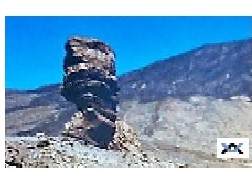
Oceanographers and marine geologists from the IEO (Spanish Institute of Oceanography) are arriving at Isla de las Palmas to study the eruption of the Cumbres Viejas volcano on the Ramón Margalef Oceanographic vessel based in the port of Vigo.
The beautiful island or island of La Palma is currently suffering the destruction of the lava rivers of the "Cumbre Vieja" volcano, which unfortunately is taking away many houses. Since 1971, when the Tenería volcano erupted, no volcanic activity was seen on the islands. On that occasion the eruption claimed a life due to the toxicity of the volcanic gases that it gave off.

The eruption that most affected humanity so far was that of the Laki volcano in 1783, in Iceland, which not only caused the impoverishment, death and emigration of a large part of its inhabitants to America due to the cloud of ash, gas and sulfur it emitted killed cattle and poisoned their crops. It is estimated that the Laki volcano released 8 million tons of hydrogen fluoride and about 120 million tons of sulfur dioxide, affecting the temperature of the planet and especially the northern hemisphere. So that year it was said that there was no summer but "summer of sand" or "Haze of Laki" due to the amount of suspended particles that it left behind. Causing the impoverishment of many people also in other countries such as France, England, etc. by ruining the crops of that year.
Due to the overheating that it caused in the atmosphere, that summer was hotter than normal and later there was a cooling of the northern hemisphere of 3 degrees Celsius.
According to the studies of volcanologist experts, volcanic eruptions can reduce the planet's temperature because the gases and ashes they expel are retained in the stratosphere, preventing solar radiation from passing through.
Another eruption, that of the Icelandic volcano Eyjafjallajökull, in 2010, caused the closure of airports in the United Kingdom, Ireland, Belgium and the Netherlands due to the ash cloud that it released into the airspace.

Remember that the Icelandic government used to dealing with volcanic activity, because the island is on two tectonic plates that cause numerous eruptions, recommended to stay in the houses with the windows closed to the inhabitants of the island as long as possible. Especially children, the elderly and people with respiratory problems, and schools were closed for days. There they measure daily the amount of sulfur and toxic gases from volcanic eruptions as well as the wind direction in these cases to know when to resume normal activities.
Currently there are more than 60 active volcanoes in eruption such as Erebus (Antarctica) Great Sitkin (United States, Aleutian Islands) Fagradalsfjall (Iceland) Popocatépetl (Mexico), Erta Ale (Danakil depression, Ethiopia) Yasur (Tanna Island, Vanuatu ) or Karymsky (Kamchatka).

